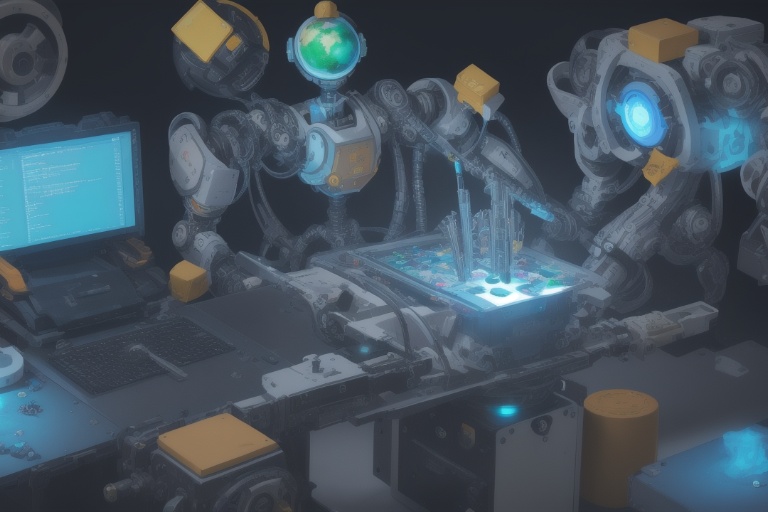Artificial intelligence (AI) has evolved significantly over the past decade, becoming an integral part of our daily lives. It has transitioned from a concept found in science fiction to a tangible tool driving innovation across various industries. However, the field of AI is wide and complex, encompassing a range of abilities and applications. A key area in this field is weak AI, also known as narrow AI, which specializes in performing specific tasks within defined boundaries. Unlike humans, it doesn't possess self-awareness or consciousness, but it plays a pivotal role in advancing technology and streamlining processes. In this article, we delve into the capabilities of weak AI, examine its limitations and concerns, and discuss the importance of responsible deployment to maximize its benefits for society. Let's embark on a journey to understand the present and future impact of weak AI on our world.
Artificial intelligence (AI) has evolved significantly over the past decade, becoming an integral part of our daily lives. It has transitioned from a concept found in science fiction to a tangible tool driving innovation across various industries. However, the field of AI is wide and complex, encompassing a range of abilities and applications. A key area in this field is weak AI, also known as narrow AI, which specializes in performing specific tasks within defined boundaries. Unlike humans, it doesn't possess self-awareness or consciousness, but it plays a pivotal role in advancing technology and streamlining processes. In this article, we delve into the capabilities of weak AI, examine its limitations and concerns, and discuss the importance of responsible deployment to maximize its benefits for society. Let's embark on a journey to understand the present and future impact of weak AI on our world.
Understanding Weak AI
Weak AI is designed to focus on a narrow task and perform it as efficiently—if not more so—than a human could. These systems are programmed to follow rules, recognize patterns, and make decisions based on data inputs without straying beyond their specified domain. Examples of weak AI include chatbots, virtual personal assistants like Siri or Alexa, and recommendation engines on streaming services.
The immeasurable value of weak AI lies in its ability to automate tasks that would otherwise consume human efforts and resources. It is the workhorse behind the operations of many companies, handling everything from customer service inquiries to compiling massive datasets. Its precision and efficiency in data analysis are unparalleled, often leading to insights and advancements that propel industries forward.
Addressing Limitations and Concerns
Despite its many advantages, weak AI is not without its limitations and areas of concern. One significant limitation is that weak AI systems operate solely within their predefined parameters and cannot perform tasks beyond them. Moreover, these systems can encounter errors or system failures if they encounter unexpected variables or changes in their environment.
The concerns surrounding weak AI are not purely technical, but also socio-economic. The increasing capabilities of AI to perform tasks historically done by humans raises alarms about job displacement and the need for a significant shift in skillsets within the workforce. As the automation of more complex tasks becomes viable, society must carefully consider the implications for employment and labor markets.
Balancing Benefits and Responsibilities
With every technological advancement comes the responsibility to wield it in a manner that benefits society while minimizing negative impacts. AI is no exception. The deployment of weak AI must be guided by ethical considerations and carefully planned to ensure it supplements, rather than supplants, human work.
Responsible deployment involves multiple facets, such as creating frameworks for AI that protect data privacy and ensure security. Companies must also consider the ethical dimensions of AI decision-making to prevent biased algorithms that could lead to unfair outcomes.
As we continue to explore the realm of AI, keeping dialogue open between technologists, policymakers, and the public is crucial to shaping a future where AI works alongside humans to improve the quality of life without compromising human values and employment.
Looking Forward
Part 1 of this series has established a foundational understanding of weak AI—its role, potential, and challenges. It sets the stage for a broader conversation on how AI, as a transformative force, must be nurtured with a thoughtful approach to reap the rewards it promises.
Stay tuned for Part 2, where we will explore strong AI, a concept that extends beyond the capabilities of weak AI. We will delve into its potential to exhibit human-like intelligence and consciousness, and the even more profound philosophical, technical, and ethical questions it raises. The journey of understanding AI is far from over, and its destination has the potential to reshape our world in ways we have only just begun to imagine.
Information for this article was gathered from the following source.


